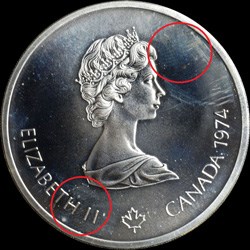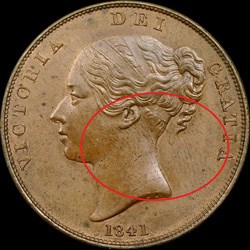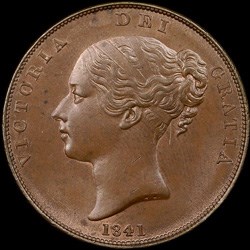NCS Conservation: Fingerprint Damage
Posted on 8/4/2016
Fingerprints can be unattractive and damaging to the surface of a coin. Part of Numismatics 101 is how to properly hold a raw coin. With clean hands, hold a coin by its edge only and do not ever touch the face of a coin. Holding a coin by the edge will prevent one of the most bothersome of problems to afflict coins—the dreaded fingerprint.
What can be done about a fingerprint that already exists, however, is a common request of the conservation professionals at NCS. Results of fingerprint removal can be somewhat mixed. Many factors can go into the creation of a fingerprint which can have an impact on the relative success in the removal process.
 |
 |
| Canada 1974 S $10 The 1976 Montreal Olympic Games Commemorative has multiple light fingerprints that were able to be removed completely. Click images to enlarge. |
|
Fingerprints are a form of residue. As with any residue, the concerns with the residue permanently changing the surface underneath are paramount. Time and the environment are the enemy of residue and may be especially true of a fingerprint. With time in the environment the chemicals making up a residue can etch and permanently change the surface metal of a coin. Fingerprints specifically contain certain skin oils as well as other substances from our hands that can make this permanent change more pronounced.
Conservation efforts often can be mixed when attempting to remove a fingerprint. Fingerprints that are relatively new can frequently be removed in their entirety without damaging the surface underneath either by the fingerprint or with the removal process. A fingerprint that has had time to etch into the surface of the coin may be lightened to varying degrees. Conservation efforts on fingerprints that have had time to etch into the surface may have the visual effect of lightening the appearance of the print. More importantly, however, the oils that make up the print cannot further the permanent etching. No matter how much a fingerprint has been able to etch in the surface metal, further progression of any damage will be halted.
While prevention is the best treatment to prevent a fingerprint from becoming permanent, there is hope. Even coins with fingerprints that have had time to change the surface metal can have their appearance lessened and potential future damage halted.
Stay Informed
Want news like this delivered to your inbox once a month? Subscribe to the free NGC eNewsletter today!


